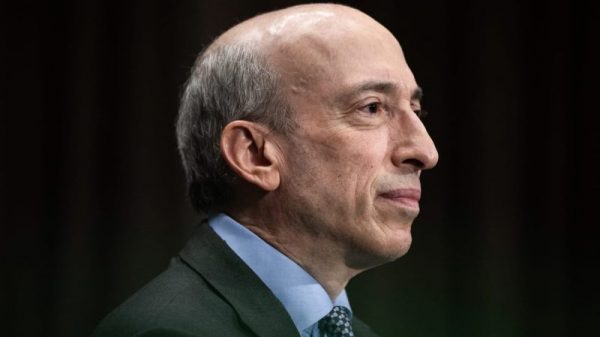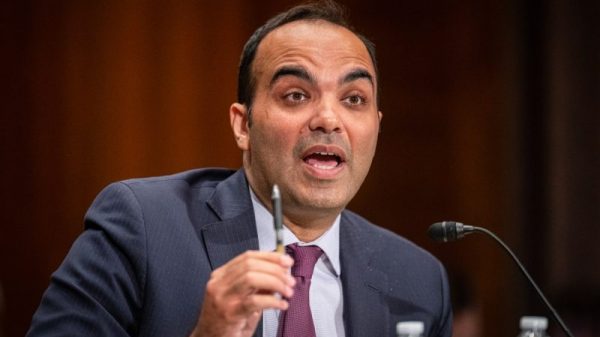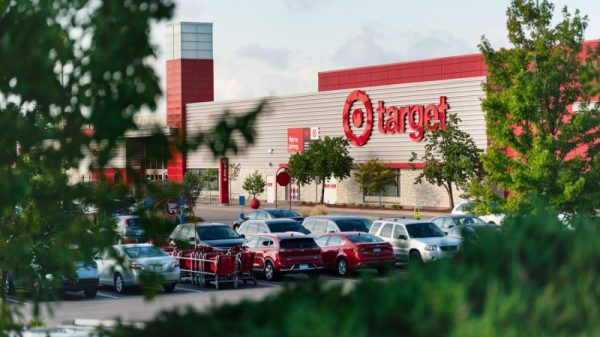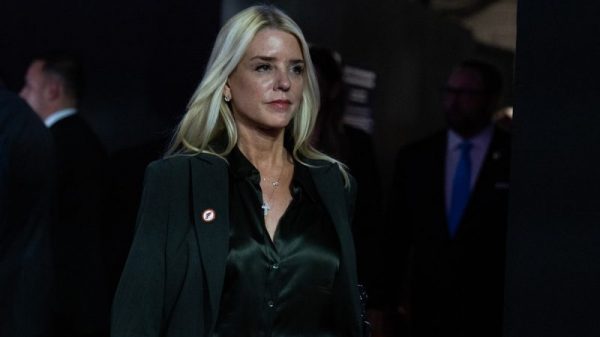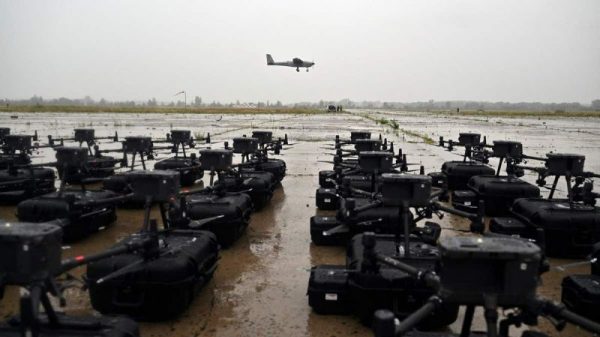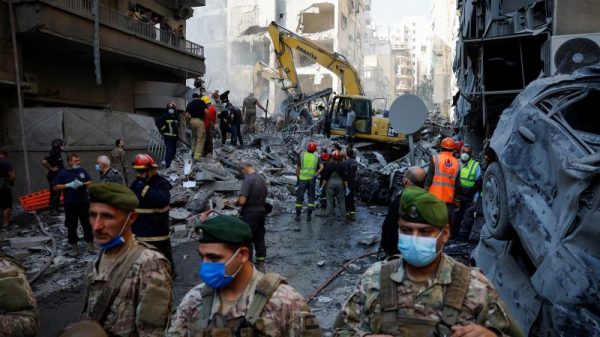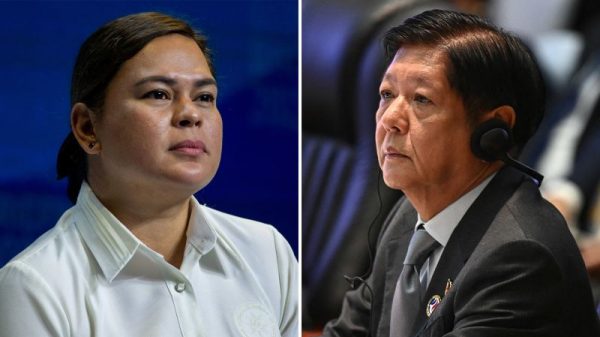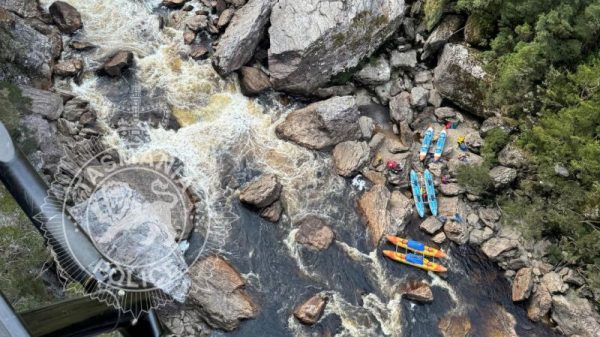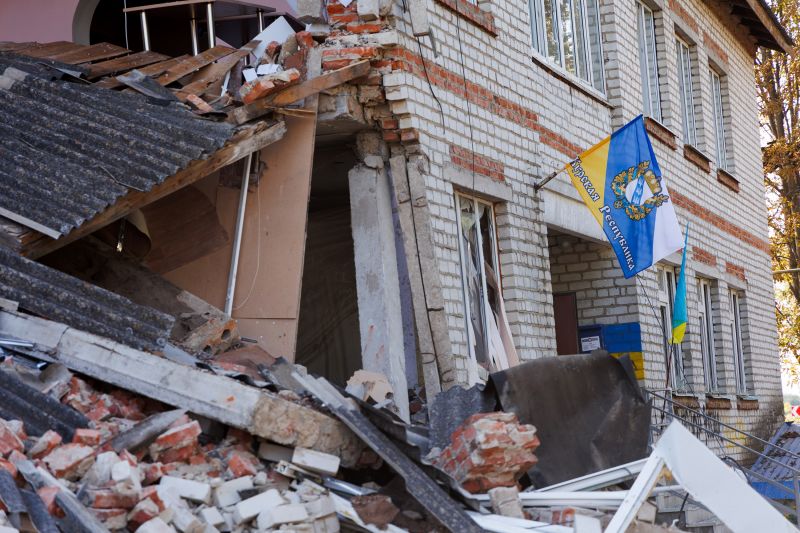A Russian counteroffensive to recover parts of Kursk lost to Ukrainian forces following a surprise, cross-border attack is underway but is yet to gain momentum.
Ukraine launched its assault last month, capturing scores of settlements, a move that stunned even Kyiv’s allies. But from the beginning observers have said it was unlikely that it would be able to hold on to its gains.
Geolocated video shows that Russian units have retaken a couple of villages, but the situation remains fluid. Both the quality and number of Russian troops committed to the region are hazy, and reliable frontline accounts are few and far between.
Ukrainian President Volodymyr Zelensky has acknowledged the start of Russia’s counteoffensive and says it intends to deploy 60,000 – 70,000 troops in the Kursk region. But he said Friday that the Russians “have not yet had any serious success. Our heroic soldiers are holding on.”
The US has assessed that Russia would need up to 20 brigades – about 50,000 men – to expel Ukrainian forces from Kursk, but Defense Department spokesman Major Gen. Pat Ryder said Thursday that Russian actions so far were “marginal” and analysts have not seen the sort of mass or quality that would quickly drive out the much smaller Ukrainian force.
Some high-caliber units do appear to be involved in the Russian counter-offensive geolocated video showed elements of the elite 51st Airborne Regiment involved in an assault on Thursday. But the Institute for the Study of War (ISW) assesses that little of the Russian grouping in Kursk “is comprised of combat experienced units.”
Initial indications are that Russian forces may try to cut off Ukrainian troops near the town of Korenevo before beginning a larger-scale counteroffensive operation.
Video surfaced of the Russian flag – and incidentally, the flag of the Wagner private military company – being raised in the village of Snahost. But the officer said the situation had stabilized and there was fierce fighting in another nearby village.
There are also signs that Ukrainian units may be developing a new assault route into a different part of Kursk, near the town of Veseloe. This might be intended to distract Russian forces.
“By launching surprise offensives across the thinly defended border, Ukraine can pursue operational-level guerrilla warfare to support an overall strategy of exhaustion,” says Robert Rose of the Modern War Institute at West Point.
Despite the gathering Russian counterattack in Kursk, and mounting Ukrainian losses, Zelensky insists the incursion into Kursk is necessary and valuable, and has slowed Russian advances in eastern Donetsk, where the city of Pokrovsk is under immediate threat. Russia’s President Vladimir Putin is seeking to fully capture four eastern Ukrainian regions he already partly controls, and most of the fighting in the war has focused on this area.
“The speed [of the Russian advance] in the Donetsk sector was even faster before the Kursk operation. And not only in Donetsk [sector], but in the whole of the east,” Zelensky said.
While Russian momentum slowed in the first week of September, no significant units were withdrawn to fight in Kursk, although some were redeployed from less contested areas along the 1,000-kilometer (621-mile) front line. The Kremlin appears to prioritize the goal of progress in Donetsk over retrieving lost Russian territory – for now.
The Ukrainians have offered several reasons for the Kursk operation – that it would force Russia to redeploy troops currently committed on the front-lines in Ukraine; that it would provide Ukraine with land to trade in any negotiations; that it would make a mockery of Putin’s ‘red lines’; and that it would provide a pool of prisoners-of-war to exchange (which it already has.)
Zelensky claims that the Kursk operation has shown Putin’s warnings about the consequences of escalation to be hollow.
Zelensky has now added another justification for the Kursk offensive: that it forestalled a Russian plan to take a large swathe of northern Ukraine as a buffer zone, a plan that would have swallowed “regional centers.”
He told the Kyiv panel that “information from our partners” indicated that the Russians intended to create “security zones” deep inside Ukraine.
The ISW, a think-tank in Washington DC, said Friday that the Russian military command may have intended “additional offensive operations along a wider and more continuous front in northeastern Ukraine to significantly stretch Ukrainian forces.”
For now, such Russian ambitions are on hold. They still hold the advantage in firepower and men along most of the existing frontlines and will continue to use the tactic of intense bombardment – followed by infantry advances through the ruins of what has been destroyed – as a way of grinding down the enemy.
The Ukrainians have several immediate priorities: creating and strengthening defensive lines in the east and accelerating the formation of new units. They are developing longer-range strike capabilities to degrade Russian infrastructure such as airfields and fuel depots. And they are demanding greater freedom to use precision western missiles in strikes deep inside Russian territory.
Zelensky told Fareed Zakaria Friday that Russia’s guided aerial bombs, known as FABs, were responsible for 80% of destroyed infrastructure – and Ukraine urgently needed to hit the airfields from which they are launched.
This appeal appears to be gaining traction. UK Prime Minister Keir Starmer said at his meeting Friday with US President Joe Biden that “the next few weeks and months could be crucial – very, very important that we support Ukraine in this vital war of freedom.”
But the Biden Administration is wary of the consequences of what the Kremlin sees as an escalation that would bring NATO directly into the conflict.
The Kursk incursion may encourage Ukraine to develop another tool that “could fundamentally change Ukraine’s approach to fighting,” according to Rose at the Modern War Institute.
“Ukraine cannot use manoeuvre to achieve a decisive victory over Russia. What it can do is use manoeuvre to exploit vulnerabilities, force Russia to over-extend, create chaos, encircle Russian forces, and capture Russian equipment.”
The crux, according to Matthew Schmidt, University of New Haven Associate Professor of National Security, is how Ukraine changes Putin’s decision-making, whether in Kursk or by much deeper strikes inside Russia, or both.
“Does it make him negotiate? Does it cause him to pull back or pause in Donetsk?”
Kursk may have succeeded in persuading Biden and other western allies to approve deeper strikes, Schmidt says – and “If follow-on attacks can sustain the war deep inside Russia, so it affects Russians and then affects the Kremlin’s decision making.”
That would define it as a success. But we need to ask the bigger question, as the US eventually did in Iraq, says Schmidt. “How does this end?”






